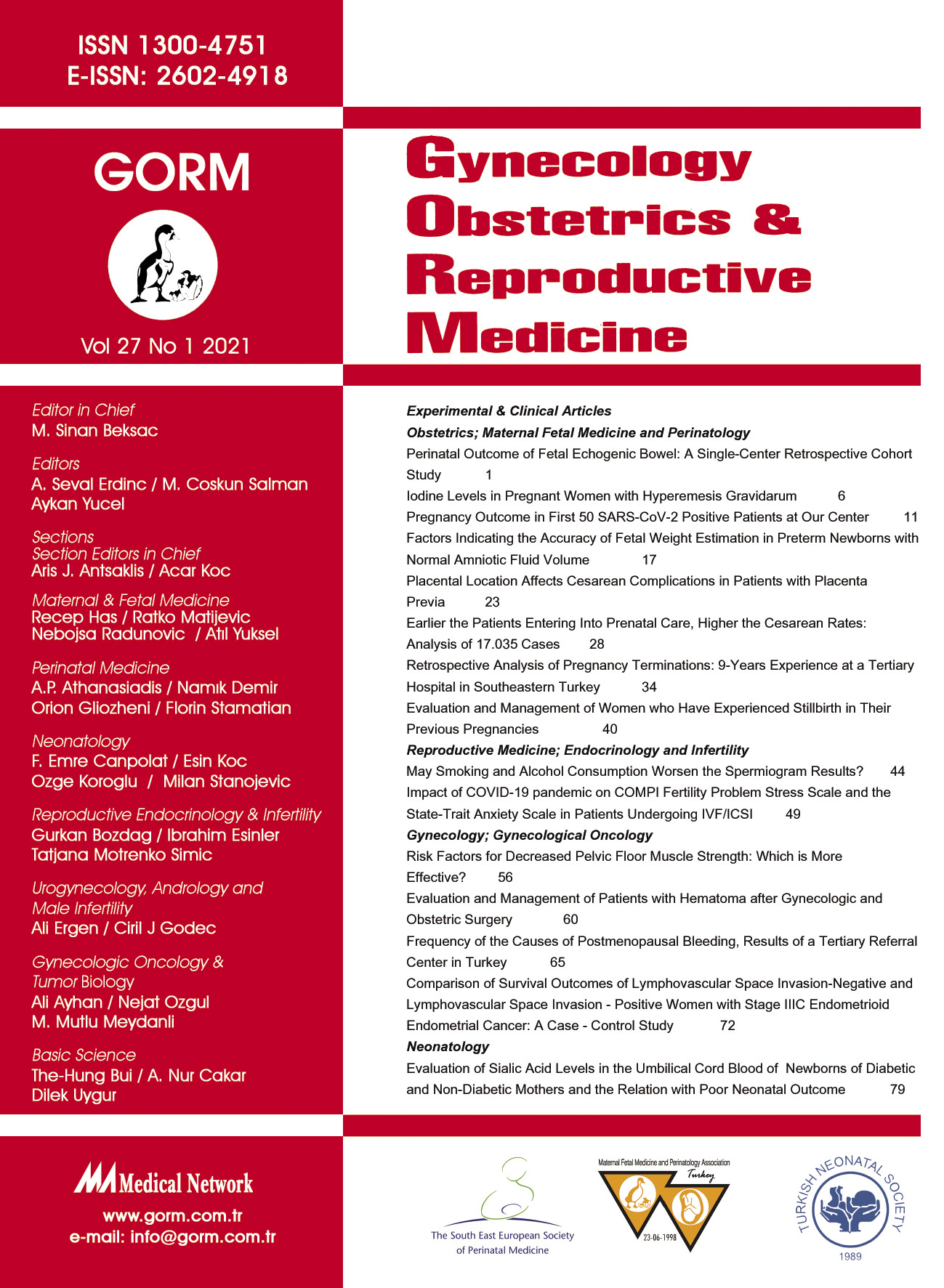Evaluation of Sialic Acid Levels in the Umbilical Cord Blood of Newborns of Diabetic and Non-Diabetic Mothers and the Relation with Poor Neonatal Outcome
DOI:
https://doi.org/10.21613/GORM.2019.906Keywords:
Diabetes mellitus, Newborn, Pregnancy, Sialic acidAbstract
Objective: The aim of this study is to evaluate sialic acid levels in cord blood samples of infants of natal diabetic and non-diabetic pregnancies and to assess the correlation of sialic acid levels with the poor neonatal outcomes.
Study Design: The study was conducted between January 2016 and February 2018 with 48 diabetic patients and 39 non-diabetic patients. The inclusion criteria were participants should have an oral glucose tolerance test, patients should not have rheumatic or metabolic diseases, and the follow-up visits during whole pregnancy should be in our hospital. Sialic acid levels of the participants were assessed from the newborn cord blood within the first 6-24 hours postnatally. Also mean platelet volume, mean corpuscular hemoglobin concentration, mean corpuscular hemoglobin, platelet, bilirubin values were recorded as well as the age, gravida, parity, gestational week of the participant mothers and type of delivery, gender, weight, height and the APGAR score of the newborn, and whether insulin was used or not. SPSS statistical program was used to interpret the obtained data.
Results: A total of 87 patients were included in the study, 48 from the diabetic patient group and 39 from the control group. There was no difference in sialic acid levels between the two groups (p=0.155). When the diabetic group was divided into subgroups, the group with the highest sialic acid level was type I diabetes (46.25±3.6). The others, in decreasing order, were participants with Type II diabetes (33.00±4.1) and gestational diabetes (20.87±3.7) and the difference was statistically significant (p=0.001). Those who were diabetic and on insulin treatment had significantly higher sialic acid values than those who were on diabetic diet only (p=0.007). When the sialic acid is compared in participants with higher blood glucose levels with those with a lower blood glucose level sialic acid concentration was lower in those with higher blood glucose. (p=0.006). Between these two groups, no difference was found regarding the poor neonatal outcomes and laboratory parameters (p >0.05).
Conclusion: Infants of diabetic and non-diabetic patients in pregnancy had no difference in sialic acid blood levels and neonatal outcomes in cord blood. However, among diabetic groups, sialic acid levels were higher in type I diabetic group than in other diabetic groups
Downloads
Downloads
Published
How to Cite
Issue
Section
License
Copyright (c) 2020 Yuksel Kurban, İbrahim Uyar, Koza Murat, Murat Alan

This work is licensed under a Creative Commons Attribution 4.0 International License.
All the articles published in GORM are licensed with "Creative Commons Attribution 4.0 License (CC BY 4.0)". This license entitles all parties to copy, share and redistribute all the articles, data sets, figures and supplementary files published in this journal in data mining, search engines, web sites, blogs and other digital platforms under the condition of providing references.





